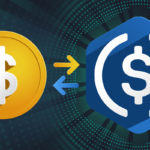
S&P 500 : How it Works and How to Invest

Imagine this: you’re at a backyard barbecue, sipping on your favorite drink, chatting with friends, and someone mentions the S&P 500. Your ears perk up because you’ve heard this term before, but the details seem to elude you.
Don’t worry; you’re not alone.
Today, we’re going to break down the S&P 500 and help you become an S&P 500 expert .
Understanding the S&P 500

The S&P 500, short for Standard & Poor’s 500, is like a big basket of the most important companies in the United States.
It covers a wide range of industries, including technology, healthcare, finance, consumer goods, and more.
This diversity makes it a reliable gauge of the overall health and direction of the U.S. economy.
Many investors and fund managers use the S&P 500 as a benchmark to assess the performance of their investments. It serves as a yardstick against which the returns of individual stocks, mutual funds, and other investment strategies are compared.
Its performance is often seen as a reflection of the broader U.S. economic outlook, and changes in the index can impact international financial markets.
How Does the S&P 500 Work?
This Index is maintained by the S&P Dow Jones Indices, a division of S&P Global. It is overseen by a committee responsible for selecting and managing index components.
The index includes 500 of the largest publicly traded companies listed on U.S. stock exchanges. These companies are referred to as “large-cap” stocks.
The S&P committee uses specific eligibility criteria and a screening process to identify potential constituents. The 4 eligibility criteria are :
- It should have a market capitalization of at least $10 billion to be eligible.
- The company should have positive earnings over the most recent four quarters.
- Adequate liquidity is essential, so stocks should have a reasonable trading volume.
- A company must be a U.S. corporation.
- Companies must have a public float of at least 50%, this means that at least 50% of a company’s outstanding shares should be freely tradable.
The S&P 500 is a market-capitalization-weighted index. This means that companies with larger market capitalizations have a more significant impact on the index’s performance.
It is also rebalanced periodically to account for changes in market capitalization and to ensure it continues to represent the largest U.S. companies accurately. Rebalancing typically occurs on a quarterly basis.
Why Invest in the S&P 500?
Investing in the S&P 500 offers a range of benefits that make it an attractive option.
Here are 10 key advantages of investing in this index:
- Diversification: Investing in the index provides instant diversification, spreading risk across different sectors.
- Market Benchmark: By investing in it, you align your portfolio with the broader market’s performance, making it easier to gauge your investments’ relative success.
- Historical Performance: Historical data shows that, despite short-term fluctuations, the index has generally provided positive returns, making it an appealing option for investors with a long-term horizon.
- Liquidity: S&P 500 stocks are highly liquid, meaning they can be easily bought or sold in the market without causing significant price fluctuations. This liquidity allows us to enter and exit positions with ease.
- Lower Costs: Investing in S&P 500 index funds or exchange-traded funds (ETFs) often comes with lower management fees and expenses compared to actively managed funds.
- Accessibility: It is readily available through various brokerage platforms.
- Passive Investing: Investing in the S&P 500 through index funds or ETFs is a form of passive investing.
- Tax Efficiency: Due to lower turnover within the index compared to actively managed funds.
- Dividend Income: Investing in the index provides exposure to dividend-paying stocks, offering potential income in addition to capital appreciation.
- Risk Mitigation: While the stock market can be volatile in the short term, the S&P 500’s diversification across sectors and industries can help mitigate risk.
(It’s important to note that while the S&P 500 offers these benefits, no investment is entirely risk-free. Market fluctuations, economic events, and individual company performance can impact the index’s returns. Therefore, it’s essential for investors to assess their financial goals, risk tolerance, and investment horizon before making investment decisions. )

How to Invest in the S&P 500 ?
Investing in the S&P 500 is relatively simple and can be done by following these step-by-step guidelines:
- Set Clear Financial Goals: Before you start investing, define your financial objectives
- Build an Emergency Fund: This fund should typically cover three to six months’ worth of living expenses.
- Choose an Investment Account: Open an investment account that suits your needs.
- Fund Your Account: The amount you invest should align with your financial goals and risk tolerance. Ensure you have sufficient funds to cover transaction costs and fees.
- Research Investment Options: Like index funds, etfs or you can decide to buy directly stocks within the index.
- Place an Order : Once you’ve chosen your investment vehicle, place an order to buy shares. Specify the number of shares or the dollar amount you want to invest. Be aware of any trading commissions or fees associated with the purchase.
- Monitor Your Investment: It’s essential to periodically review your portfolio to ensure it aligns with your goals and risk tolerance.
- Rebalance as Needed: Buy or sell more shares to realign your asset allocation.
- Stay Informed: Stay informed about market news and events that may impact the S&P 500.
And I want to remember you, that investing in the S&P 500 is a long-term strategy. So you need to have patience and discipline.
Best S&P 500 Investment Tips
Here are my 4 practical tips for you, to start with confidence:
- Dollar-Cost Averaging (DCA): Consider employing a DCA strategy by investing a fixed amount of money at regular intervals (e.g., monthly or weekly).
- Dividend Reinvestment: Consider reinvesting dividends earned to maximize the power of compounding.
- Set Realistic Expectations
- Continuously Educate Yourself: Because knowledge is a valuable tool for making informed investment decisions.
Common Mistakes to Avoid
- Avoid making impulsive investment decisions based on daily market news or short-term market movements.
- Ignoring fees and expenses
- Avoid chasing hot stocks.
- Lack of patience
- Trying to predict the best times to enter or exit the market
- Failing to rebalance
- Overtrading
- Failing to research
Resources and Tools
Here are some reliable resources, websites, and tools for tracking the S&P 500 and staying informed about financial markets:
(You can access these websites directly by clicking on the links provided. We may earn a commission from affiliate links. It helps support our site and allows us to provide valuable content to you. You won’t be charged extra. Thank you for your support!)
Final Toughts

If you want to know more about this topic, here are my best picks for you :
Recent Posts
- Stablecoin vs Fiat Currency : Who Win This Great Debate ?In the ongoing debate of Stablecoin vs Fiat, as the global economy transforms, questions arise about the roles these currencies play in shaping our financial future. This exploration dives into the core of the debate, highlighting the differences, benefits, and…
- IPO Explained : How to Start the Right WayIPO explained simply. Ever thought about how companies go from being private to being in the stock market spotlight? It’s through something called an Initial Public Offering, or IPO. It’s like a big debut for companies, with lots of potential…
- Trading vs Investing : Wich is the Better Solution?In the world of money, deciding between trading vs investing is a big deal. It’s like choosing a path that will seriously affect your financial future. Trading and investing are different ways to handle your money, and the choice you…
- What is the Most Secure Stablecoin of 2023 ?We’ll take a deep dive into the world of stablecoins, exploring their types, evaluating criteria for security, and identifying the most secure stablecoin. The cryptocurrency market is in constant evolution and with new players entering the scene, security has become…
- Penny Stocks vs Crypto : What is the Best Solution ?In this exploration of Penny Stocks vs. Crypto, we will delve into the heart of these investment choices. Penny Stocks and Cryptocurrencies, each of these asset classes carries its own unique set of promises and perils, offering the potential for…












